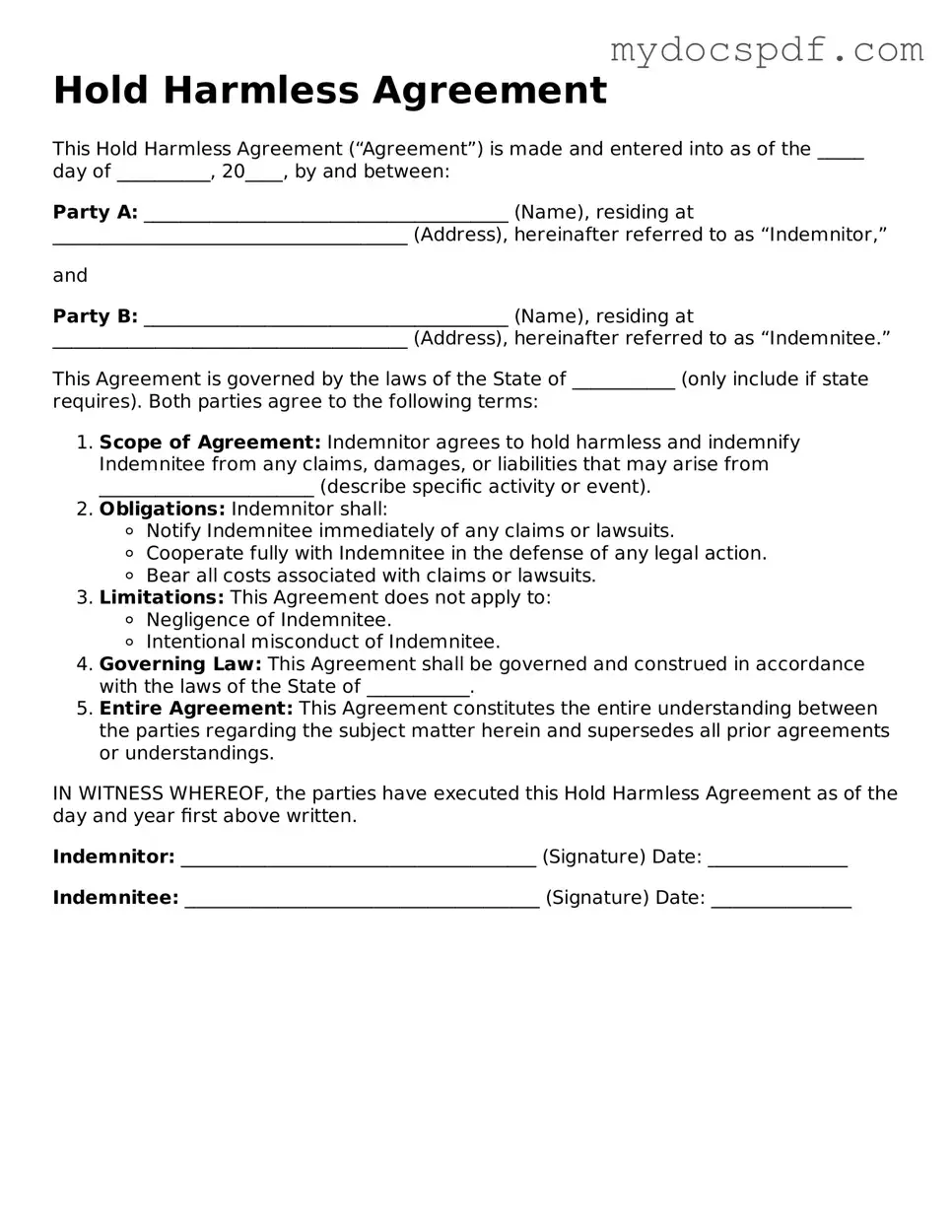Hold Harmless Agreement
This Hold Harmless Agreement (“Agreement”) is made and entered into as of the _____ day of __________, 20____, by and between:
Party A: _______________________________________ (Name), residing at ______________________________________ (Address), hereinafter referred to as “Indemnitor,”
and
Party B: _______________________________________ (Name), residing at ______________________________________ (Address), hereinafter referred to as “Indemnitee.”
This Agreement is governed by the laws of the State of ___________ (only include if state requires). Both parties agree to the following terms:
- Scope of Agreement: Indemnitor agrees to hold harmless and indemnify Indemnitee from any claims, damages, or liabilities that may arise from _______________________ (describe specific activity or event).
- Obligations: Indemnitor shall:
- Notify Indemnitee immediately of any claims or lawsuits.
- Cooperate fully with Indemnitee in the defense of any legal action.
- Bear all costs associated with claims or lawsuits.
- Limitations: This Agreement does not apply to:
- Negligence of Indemnitee.
- Intentional misconduct of Indemnitee.
- Governing Law: This Agreement shall be governed and construed in accordance with the laws of the State of ___________.
- Entire Agreement: This Agreement constitutes the entire understanding between the parties regarding the subject matter herein and supersedes all prior agreements or understandings.
IN WITNESS WHEREOF, the parties have executed this Hold Harmless Agreement as of the day and year first above written.
Indemnitor: ______________________________________ (Signature) Date: _______________
Indemnitee: ______________________________________ (Signature) Date: _______________
